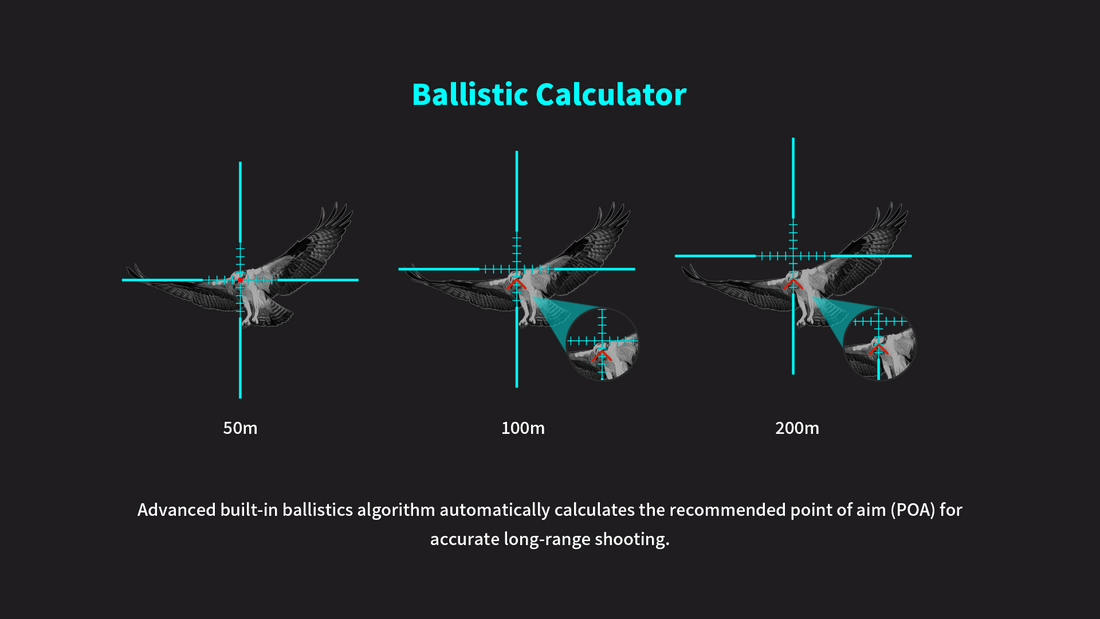
Ballistic Calculation Explanation
Share
Ballistic Calculation Explanation
Ballistic calculation is the process of determining the trajectory, velocity, and other motion parameters of a projectile (such as a bullet, missile, or artillery shell) under the influence of forces like gravity, air resistance, and wind. It is widely applied in military ballistics, aerospace engineering, and sports science (e.g., projectile motion in athletics). Below is a detailed explanation of its core concepts and mathematical foundations.
1. Basic Concepts in Ballistics
- Trajectory: The path of a projectile through space, typically a curved line due to gravity and air resistance.
- Projectile: Any object launched into motion with an initial velocity, acted upon by external forces (excluding its own propulsion after launch).
- Muzzle Velocity: The speed of a projectile as it exits the barrel of a firearm or launcher.
- Drag Force: Air resistance that opposes the projectile’s motion, dependent on velocity, air density, and projectile shape.
- Gravity: Causes a downward acceleration (≈9.81 m/s² on Earth), curving the trajectory.
2. Types of Ballistic Models
Ballistic calculations can be divided into two main categories based on the assumption of air resistance:
2.1 Vacuum Ballistics (No Air Resistance)
In a vacuum, the only force acting on the projectile is gravity. This simplifies the calculation to a parabolic trajectory.

2.2 Aerodynamic Ballistics (With Air Resistance)
In real-world scenarios, air resistance (drag) significantly affects the trajectory, making it a flattened curve with shorter range.


3. External Ballistic Factors
Several environmental and operational factors influence ballistic calculations:
-
Air Density:
- Decreases with altitude, reducing drag (e.g., projectiles travel farther at high altitudes).
- Calculated using the barometric formula or standard atmosphere models.
-
Wind:
- Crosswind: Causes lateral deviation (e.g., drift in bullet trajectory).
- Headwind/Tailwind: Affects horizontal velocity (headwind reduces range, tailwind increases it).
-
Temperature and Humidity:
- Higher temperature lowers air density; higher humidity slightly lowers density (due to lighter water vapor).
-
Earth’s Rotation (Coriolis Effect):
- Significant for long-range projectiles (e.g., artillery, missiles), causing lateral deflection.
4. Applications of Ballistic Calculations
-
Military:
- Firearm aiming (compensating for drop and wind drift).
- Missile guidance systems (incorporating real-time environmental data).
-
Aerospace:
- Rocket trajectory planning (accounting for atmospheric drag and Earth’s curvature).
- Reentry vehicle design (managing heat and deceleration).
-
Sports:
- Optimizing throw angles in javelin, shot put, or archery.
5. Tools for Ballistic Calculation
-
Software:
- JBM Ballistics: Free online calculator for firearms.
- MATLAB/Simulink: For advanced trajectory simulations.
- Aerodynamic simulation tools (e.g., ANSYS Fluent) for drag coefficient analysis.
-
Field Instruments:
- Rangefinders: Measure distance to target.
- Weather stations: Provide real-time data on wind, temperature, and barometric pressure.
6. Example Calculation (Vacuum Ballistics)
Problem: A bullet is fired at 500 m/s with a launch angle of 30°. Calculate the maximum height and range.

7. Summary
Ballistic calculation is a blend of physics, mathematics, and engineering. While vacuum models provide idealized solutions, real-world applications require complex aerodynamic and environmental corrections. Advances in computing have enabled precise simulations, enhancing accuracy in fields from firearms to space exploration.
